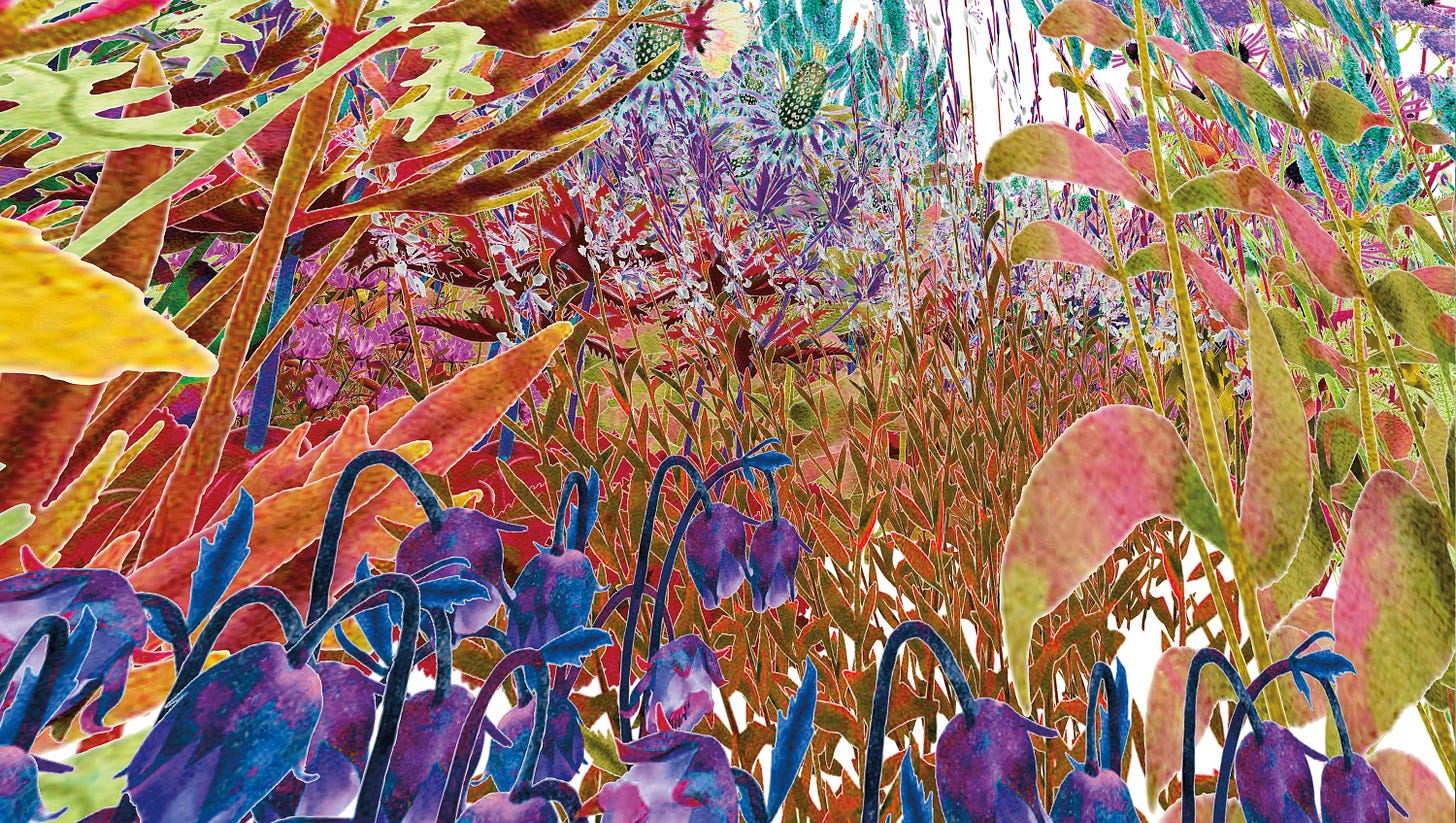Dear Solution-aries,
Imagine for a moment you could perceive the world like a bee. Bees have the fastest color vision in the animal world, about five times faster than humans’, enabling them to navigate the world with extreme efficiency and speed. While we humans might let our gaze wander over a flower field and appreciate the colors, bees perceive each individual flower as they zip by. Also, if you were a bee, you couldn’t see red, but you would see ultraviolet light humans can’t see, so you’d be able to detect ultraviolet flower colors. Bees actually have five eyes; three additional smaller eyes called ocelli help them navigate, a bee’s version of GPS.
“The superpowers they have make me feel so inadequate,” says artist Alexandra Daisy Ginsberg. “I can’t see polarized light; I can’t memorize the locations of all the flowers I visited, and that’s just a small list of my failings as a human.”
Ginsberg’s journey into researching how pollinators perceive the world started in the spring of 2020, when the British artist was asked to design a sculpture to raise awareness about pollinators. “Instead of making a sculpture about pollinators, I thought it would be better to make a sculpture for pollinators,” she says, and points to studies that show a decline of 75 percent of pollinators over 27 years in Germany due to insecticides, pests and climate change. The data from other countries is similar. “That led me to the question, What do pollinators like? What would they enjoy?” she explains.
The result was the first Pollinator Pathmaker Edition, a 180-foot-long permanent garden installation with 7,000 plants at the Eden Project, Cornwall, that opened as part of the Create a Buzz project in 2021. In 2022 Ginsberg added 11 meandering beds in Kensington Gardens, London, and in 2023, a garden in the front yard of the Natural History Museum in Berlin followed by 15 community gardens around Berlin.
One of the cool things is that you can create your own garden with the same tools. In addition to the big public gardens, Ginsberg’s free DIY algorithm toolbox allows amateur gardeners to plug in their own yard conditions and turn their patch into living artwork as well. You can see 3D visualizations of your unique garden bloom on your screen.
Copyright: Alexandra Daisy Ginsburg
Read the full story here on Reasons to be Cheerful!
I also wrote about how the esteemed Carnegie Hall is helping young people explore the music industry. While many successful artists are POC, I was shocked to find a study that showed 100 percent of the top executives at the nine biggest music companies were white and only one was female. The Carnegie’s B-Side is trying to change that.
And while we’re on the topic of art and changemakers, I really enjoyed interviewing Wanda Dalla Cost, Canada’s first First Nations female architect. She seeks to innovate contemporary architecture by integrating the rich history of Native culture. She calls herself a “double underdog,” being female and a minority in architecture, but believes the perspective adds strength: “I’ve learned to deeply listen to underserved voices.”
Her path into architecture is as unusual as her buildings. She became interested in construction and urban planning when she started traveling around the world in 1990. Instead of one gap year as planned, she ended up backpacking for seven years through 40 countries, including Australia, New Zealand, Asia and Latin America. “Visiting the Angkor Wat temples in Cambodia or seeing wall reliefs in India, which describe the entire history of the people, I noticed how visible people’s traditions still were in buildings. I thought to myself, the little boxes we have here in North America have nothing to do with our culture. There is such a disconnect. Why couldn’t we uplift visibility using the tool of architecture?”
Take a look at her work and profile here!
Copyright: Tawaw Architecture
I hope you’re enjoying the work of all these unusual artists as much as I do.
Cheerfully,
Michaela





